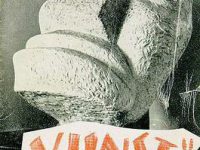Robert Hope-Jones and the Theatre Organ
On February 9, 1859, British instrument maker Robert Hope-Jones was born. Hope-Jones is considered to be the inventor of the theatre organ in the early 20th century. He thought that a pipe organ should be able to imitate the instruments of an orchestra, and that the console should be detachable from the organ. Early Years Robert Hope-Jones was born in Hooton, The Wirral, Cheshire, to William and Agnes Hope-Jones. He was one of nine…
Read more











